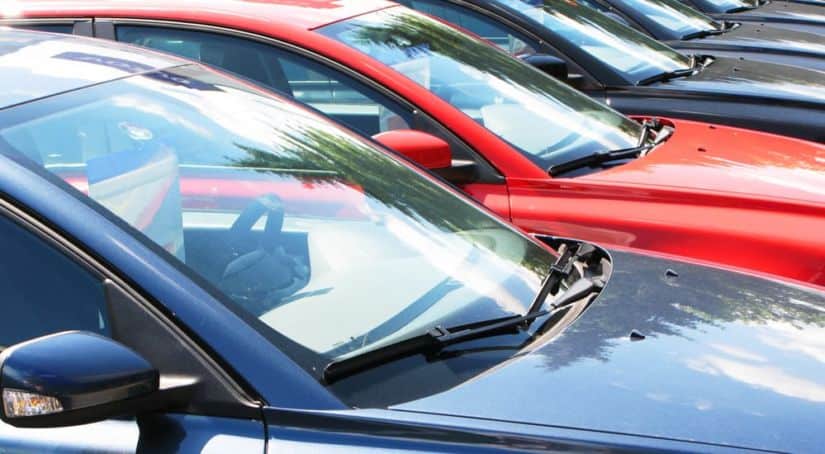When you are in the market for a used car, truck, or SUV, there are a number of key factors you need to address when making your choice. So, you start with a simple search for used cars. Then you see page after page of results, linking you to online car inventories and car dealerships, some in your area, and others seemingly far, far away. There seems to be almost endless options. What do you do? It is an information overload. Take a step back, and think this through.
Despite many myths about reliability or dependability, used cars actually provide many buyers with the most value for the dollar of any vehicle purchase option. Not only will you find that prices are lower for a used car opposed to a new one of the same make and model, but you may find that your taxes and collision insurance premiums are lower as well. In addition, you won’t take the same depreciation hit, as new cars see their biggest depreciation in value during the first year of ownership. However, even with all of these benefits, you should keep certain things in mind before getting into the market for a used car. Here are several tips to help you with your buying process.
1. Certified Pre-Owned vs Used
Every vehicle that has had a previous owner is technically a used car. However, in recent years, dealerships have been offering vehicles that are certified pre-owned. In order to receive this designation, the vehicle must have undergone a rigorous inspection by the manufacturer or certified mechanic. This means that someone with proper training has looked at all of the structural and mechanical functions of the vehicle, and returned it to like-new. A report is issued that goes along with the vehicle, giving you better peace of mind about its quality, dependability, and reliability. In addition, certified pre-owned vehicles will receive a limited warranty from its manufacturer, covering most potential problems. In some cases, manufacturers will even issue a powertrain warranty covering the engine, driveshaft, and transmission, typically the most expensive and difficult parts of a car to fix. Finally, some manufacturers even offer free 24-hour roadside assistance and a loaner car program in the unlikely event that your certified pre-owned vehicle has a problem requiring major repairs. While you can always hire a mechanic to do the inspection of a used car, this will be an added expense for you, and you will not receive the limited warranty and other benefits that come with a certified pre-owned vehicle.
2. Key Resources
When you enter the market for a used car, there are several key resources that you should rely on for your search. Kelley Blue Book will tell you the market value price ranges and fair purchase prices for all used cars based on make, model, year, and mileage. These numbers are based on actual transactions and will cover different transaction types, such as typical listing price, certified pre-owned price, trade-in value, and private party value. This will provide you with a ballpark figure of the price you should pay for the specific used car, truck, or SUV that you want to buy. In addition, if the price is substantially less than that of the Kelley Blue Book, this should be a red flag that there may be an undisclosed problem with the vehicle.
Once you have identified the specific used car you want to purchase, you should ask the owner or dealer for a CARFAX Vehicle History Report. This is an invaluable tool that will report on such important issues, such as if the vehicle has been in any major accidents, if there are any open recalls, the vehicle’s service history, if its airbags have ever been deployed, if it had multiple owners, registration information, and other key points. All of the issues covered in the CARFAX will be useful in your decision to purchase and to assist you in negotiating a fair price. For example, with respect to open recalls, many used vehicles had defective airbags from Takata, a Japanese airbag manufacturer that went out of business because of its poor quality control. While all cars that had Takata airbags were supposed to have had them replaced, many owners ignored the recall. This is why many certified pre-owned dealerships provide prospective buyers with a CARFAX as part of the used car process. If the seller is unwilling to provide a CARFAX, this should signal to you that the seller is probably not someone you should do business with.

The government also provides a number of resources to the public. The National Highway Traffic Safety Administration (NHTSA) provides a list of all vehicle recalls and technical service bulletins (TSBs) on its website. The TSBs are of particular importance in buying a used car, as manufacturers are not required to give them to vehicle owners because they do not cover safety issues. However, the TSBs will provide you with important information about potential areas you may need to have repaired on your used car. Finally, the National Motor Vehicle Title Information System provides you with a useful tool in checking for the ownership history of a specific vehicle for a nominal fee. All you need is the VIN for the used car in question.
3. Reliability and Dependability
Let’s face it; nobody enjoys owning a car, truck, or SUV that is a lemon. We all love to drive, and few things are more frustrating than when you get into your car in the morning, and it won’t start. It’s a sad fact that all cars are not created equal and that some age better than others, or are just more dependable and reliable.
One of the biggest advantages of buying a used car is that you can read reviews from experts and fellow drivers of their personal experience with the make, model, and year of the car you are considering buying. Many of these are available through a simple internet search. Consumer advocacy groups like Consumer Reports will also publish information on the frequency and cost of maintenance and repairs on most makes and models. In addition, while not every satisfied customer will post a good review on the internet, if a driver has a major problem with a car, it is almost certain that he or she will post something about it. With this information in hand, you can make an informed decision as to the reliability and dependability based on make, model, and year of the car, truck, or SUV you would like to buy.
4. Seeing is Often Believing
For most of us, buying a used car is a major investment. The purchase price alone represents a significant portion of our earned income, not to mention the ongoing costs and expenses related to car ownership. Furthermore, you are buying the used car to meet a need, whether it is to commute or even give to a new driver to get to school. That is why once you have found the used car you would like to buy, you need to spend the time to inspect the car yourself, including taking it out for a test drive. While you may like the car from its looks, you will not really know if it is the car for you until you have driven it. The test drive will let you know if the car handles the way you like, and if you feel comfortable driving it. Also, during the test drive, you shouldn’t be shy about stepping on the gas and working the brake. Both will tell you signs of potential problems, such as an engine that over revs, a brake that is soft or non-responsive, or if there is a possible issue with the transmission. A major red flag is if the seller refuses to let you take the car for a test drive. If that is the case, then you shouldn’t buy from this seller.
Buying a used car can be a fun and satisfying experience. By utilizing the resources available to you and following the tips I’ve outlined above, you should be able to avoid the pitfalls of buying a used car, and end up with a vehicle that you will enjoy driving.



